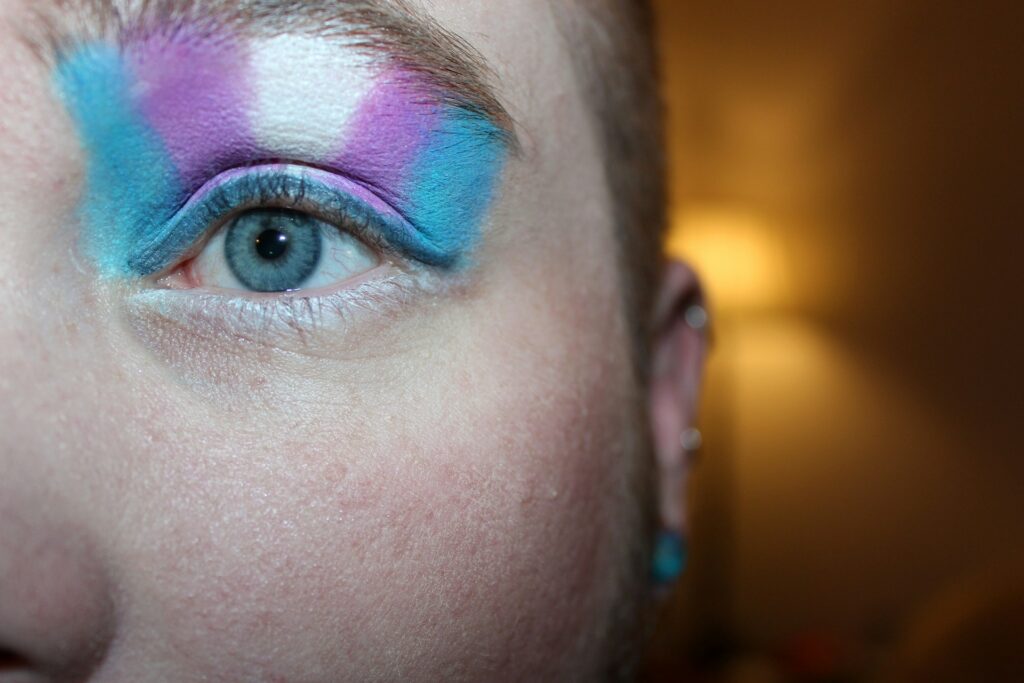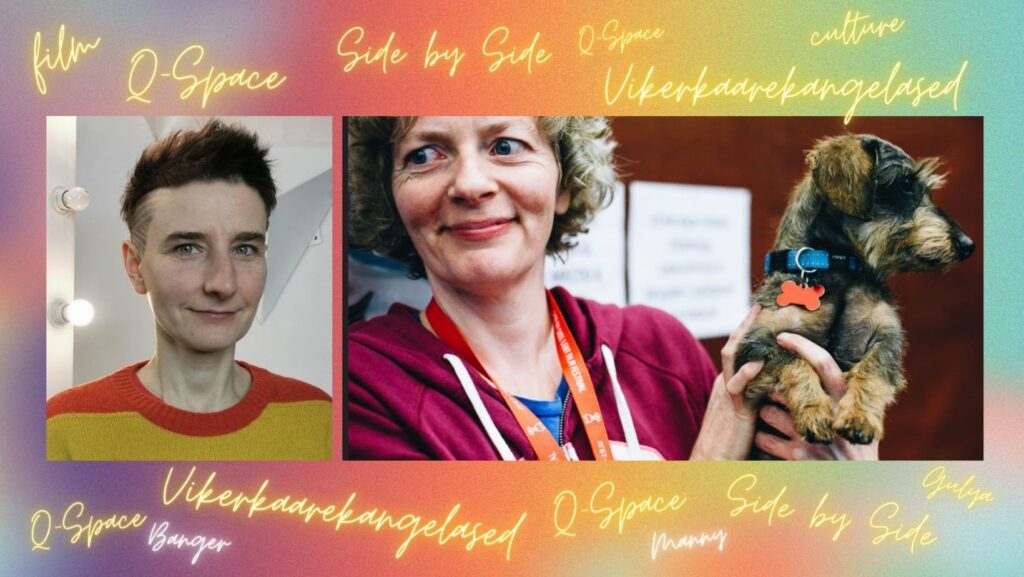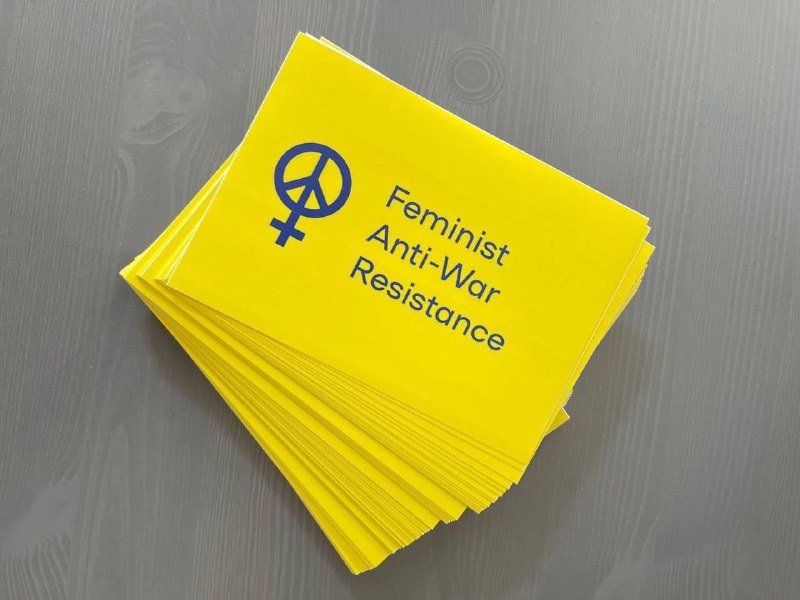The sexual politics of asylum
In recent years Estonian society has been at the centre of heated debate in two topics. One of them relates to the cohabitation law and to sexual and gender minorities, the second to migrants and refugees. Those two areas combined have been very rarely discussed in public. What do people in the two minority groups experience? Interview with sociologist Calogero Giametta speaks about the experiences of LGBT refugees in UK.
Calogero Giametta is a sociologist based in Paris. His research focus is on gender, sexuality and the political economy of migration. Between 2010 and 2014 his doctoral research examined the experiences of gender and sexual minority refugees within the British asylum system. This research was published as the book The Sexual Politics of Asylum (Routledge, 2017). Currently he is working on the humanitarian and securitisation practices targeting migrant sex workers in France.
Across Europe, granting asylum to LGBT refugees is a fairly new practice. Since when have LGBT refugees been recognised by EU states and what made it possible?
It became possible in the mid 2000s due to the legal battles won by activists and legal scholars about including sexual orientation and gender identity as a protection category in the Geneva Convention. The main argument being used was that sexual identity is innate and thus sexual orientation is unchangeable.
Until then, when asylum seekers were asking for asylum on the grounds of sexual orientation, it was always a gray area. Many people in the UK for example were asked by judges to return to their country and act discreet in order to avoid persecution. This so-called discretion principle was common in the UK, Australia, Canada and across a number of European immigration courts.
In the UK this changed only in 2010 through a case brought to the Supreme Court concerning two gay men, a Cameroonian and an Iranian, who had been told to go back and “act straight”. It was challenged by the lawyers and the Supreme Court found that the requirement to be discreet is itself a form of persecution. That was the formal ending of the discretion principle in the British context, although researchers have recently shown that the discretion reasoning is still present in immigration courts.
Was 2010 a key moment in the British context or did it also become a key moment in the EU context?
The changes started before 2010, in fact, and they were slowly taking shape also in other European countries. Important changes in the international law were also the EU Asylum Directive (2004) and the Yogyakarta principles (2006). Thanks to those regulations, sexual orientation and gender identity have become a legitimate ground on which the right of asylum can be obtained.
How many asylum applications by LGBT refugees are accepted or rejected in the UK?
When I was doing my research in 2010-2014, the UK authorities were not collating numbers about LGBT asylum seekers in the country. Only general statistics about all asylum applications were available. But I did get an impression of the proportion of rejections while I was working in one of the largest NGOs supporting asylum seekers in the UK called the UK Lesbian and Gay Immigration Group (UKLGIG). I remember that the number of refusals was very high at the beginning, but then slowly it came down, also because support organisations became more skillful in making those claims.
From which countries are LGBT asylum seekers coming to the UK? Are they coming from different places than refugees who are seeking asylum on other grounds, or is the situation mirroring general migration patterns?
At the time when I was doing my research, a lot of people came from Pakistan, Nigeria, Jamaica, and also from Iran and Uganda. Many people came from the former colonies of the UK. Language is also an important factor, as well as family ties. This definitely mirrors the general migration patterns.
LGBT asylum seekers are treated with a lot of suspicion. In the mainstream media, LGBT asylum seekers in the UK are often presented as fraudulent people lying about their sexuality in order to get papers, or doing “asylum shopping”. Sometimes this thinking is also reproduced in places where asylum seekers would come in order to be supported. At times, and it’s unfortunate when it happens, the suspicion extends from state authorities to those who are supporting asylum seekers.
What does the asylum procedure look like? What are LGBT asylum seekers asked to prove?
You need to prove two things. First of all that you are who you say you are, that is LGBT, and second that you have been persecuted, or that you fear persecution, on those grounds. Asylum seekers are asked to present a statement where they tell their biography from childhood on, including testimonies of when they found out they are LGBT, etc. After presenting their story, asylum seekers are interviewed by migration authorities. The questions can be quite tricky. Home Office workers are known for asking the same questions in different ways in order to spot inconsistencies. I say this as I want to stress that the asylum system is very much based on suspicion – all asylum seekers are assumed to be liars unless they prove the opposite.
There has been a lot of criticism towards the asylum interview process. The interview questions are often based on stereotypical ideas of what LGBT people’s lives are. Could you give some examples?
It has happened that people are asked if they know who Oscar Wilde was. When they don’t, they may not be believed to be gay. It’s a very eurocentric and classist logic. At the Home Office and within tribunals, there have been also questions about popstars or mainstream gay icons like Kylie Minogue.
Many people I interviewed for my research told me that they were asked if they go out to G.A.Y., this big club in London. People would say,‘Yeah, I know about the club, but I have never been there, I can’t afford to pay the bus ticket to go there… ’ Some people would also say that they would try to hang out in LGBT spaces but they feel uncomfortable and ignored. Being a racialised person in a queer space… that came up a lot. For women, there are nospaces anymore, the vast majority of the lesbian bars in London have been closed.
When interviewed, the person has to prove that the story is credible, plausible, and coherent. Plausibility has its paradoxical logic. For example, I remember this one case of a lesbian woman who was not believed by the judge because she was giving statements about always wearing very masculine clothing back in her country. The judge said that it was not plausible for her to express all that masculinity in a homophobic society. It was not plausible for him that she was taking all those risks. At the same time, most often gay men who are not very feminine, are not believed. Lesbian women who are not very masculine are not believed. If you are too butch, you are not believed. If you are not butch enough, there is also a problem.
What do you think, where do those stereotypes come from?
Stereotypes circulate in the larger social world we inhabit. Home Office workers and judges are also part of society.
Asylum seekers are constantly asked to show evidence. But the fact is that governments don’t produce certificates about having persecuted a person. Are there any particular difficulties relating to LGBT refugees that make it more troublesome to present evidence?
Many LGBT people have been traumatized due to violence from family members or people very close to them. It’s not necessarily the state that persecutes but it may be family members.
One more aspect is that LGBT people may not have anyone to testify for them. LGBT asylum seekers sometimes don’t even out themselves to friends in the country of arrival, because those might be in contact with their family members in the country of origin. But all of a sudden they need to present testimonies given by family or friends.
The law says that you don’t need to be out in order to be recognised as an LGBT refugee. Formally they accept this logic, but in practice it becomes more difficult to prove the claimant’s credibility.
It was clear that if a person had a partner, it made it easier for the person to be believed. What was privileged in the decisions was the notion of romantic love. But all too often, other forms of affectionate relationships didn’t find recognition.

Foto: Unsplash / Creative Commons
Did you find that there were significant differences between the experiences of those claiming asylum on the basis of sexual orientation and trans people seeking asylum on the basis of their gender identity?
Among people applying on a gender identity or a sexual orientation basis there are overlapping issues and also intersecting identities. But during my research—given the small numbers of applicants on gender identity grounds I could find—I started to wonder if trans migrants were facing other challenges to obtain validation in the asylum certification process. Through talking to trans refugees, lawyers and asylum support workers it appeared that there might have been two main reasons for the scarcity of trans respondents. First, trans asylum seekers were concerned that their stories about their transness were too complex to tell and they would rather start a claim under the gay or lesbian category. Generally this seemed to apply to those trans people who did not fit conventionally into a binary embodiment of their gender. Second, some trans people’s stories were ‘simplified’ and misrepresented by their own legal council when preparing their cases. In addition, some stories would not be taken into full account by the immigration judges who would be only able to see a feminine man or a masculine woman in front of them. In the process, trans autobiographies would often become gay or lesbian biographies. The disappearance of some forms of transness throughout the asylum certification process could be linked to the disappearance of bisexuality. Again, this seemed to occur because of the insistent search for coherence on the part of the decision makers between who someone says they are and the bodily enactments that support their account.
Would it be that some LGBT refugees do not include sexual orientation or gender identity in their asylum application because they don’t trust the state authorities to be confided about that info?
Absolutely, there is definitely mistrust towards authorities, because the authorities in their country have been abusing them.
In the beginning there was also the issue that people didn’t even know that you can apply for asylum on those grounds. Or they just decide not to disclose because it’s so intimate. If I never disclosed it to anyone, why should I disclose it to the UK authorities?
What I saw during my research was that the first claim was always excluding sexual orientation. This fact also challenges the whole idea of “asylum shopping” and playing the gay card in order to get papers.
Are the authorities asking for explanations during further stages, for example why this aspect was not included in the first claim?
No. This is due to the good awareness-raising job by lawyers, pointing out that it is difficult for people to be out. Immigration authorities should not treat this as a reason for more suspicion.
How does family reunification work in relation to LGBT refugees?
What people often do is that the partner also comes to the country and applies for asylum, arguing that there is already one partner in the country.
Family re-unification can also be done through Article 8 of the European Convention on Human Rights, but this takes a lot of time and there is no free legal aid to support the process.
What about kids?
Two of my respondents were African women who had kids in their country. They had to struggle a lot to be believed that they were lesbians. And once they got the refugee status, they had to wait years before being united with their kids.
In your research you have been critically reflecting on the notion of authenticity within the asylum procedure. What is your conclusion on this?
When you present your story you have to be credible. You have to be an authentic person telling a true story about yourself. In order to do that, you should also prepare yourself. If you do not prepare or rehearse that coherent story of yourself, it will not be believed. Paradoxically authenticity is not recognized insofar as it is not well constructed. There is nothing natural about authenticity!
It’s an important thing to keep in mind. The asylum process is a legal procedure, and the person who goes through that procedure needs to be well prepared.
During the time when you were doing your research, you were also active in a theater group working with asylum seekers. This theater group aimed to counteract the constant pressure of being authentic and truthful.
The theater group was part of the same organisation supporting LGBT refugees where I worked. It was a very playful frame and we usually addressed themes of sexuality, love, mobility, migration because that was the common experience.
It was liberating for asylum seekers to become actors, without having to be telling the truth and without being assessed for telling the truth.
And paradoxically, the theater workshops were some sort of preparation for the interviews as well. It was about understanding how to create and tell a story.
I remember one of the sketches that the asylum seekers did. It was a hilarious and ironic remake of the X-factor, where the three judges were deciding on the question “Are you gay enough to stay?
(According to the spokesperson of the Estonian Police and Border Guard Board LGBT asylum seekers have also asked and got protection from the state, but no statistics are available. Ed)










